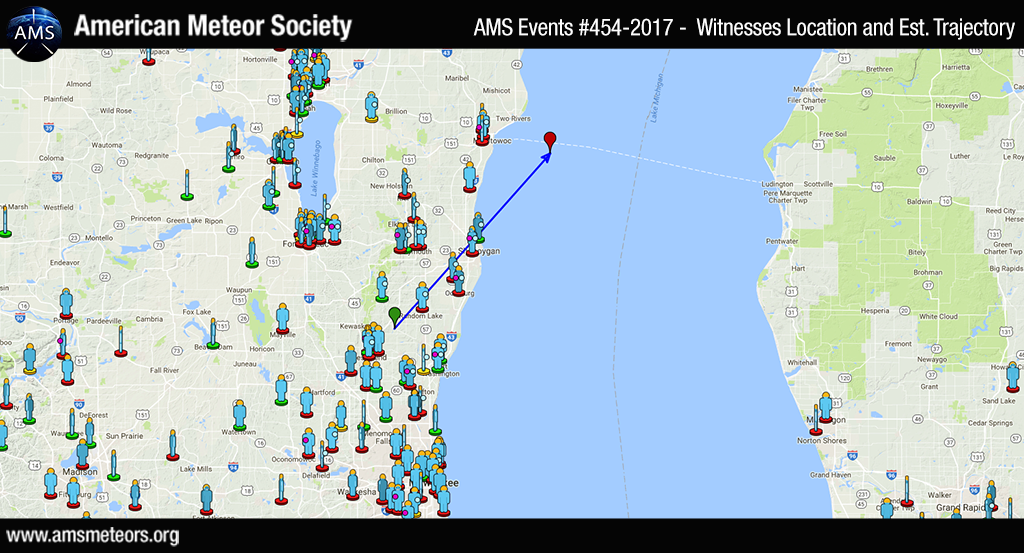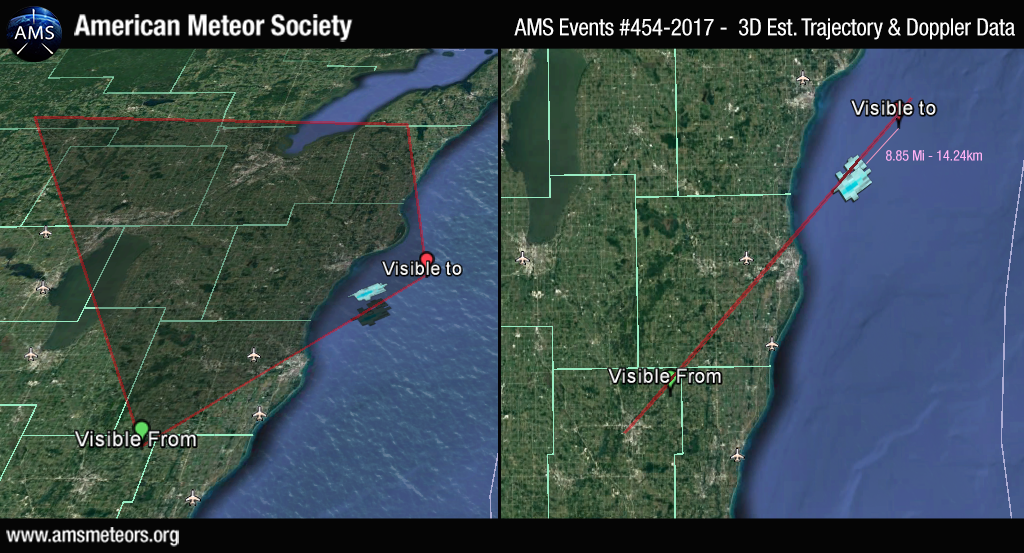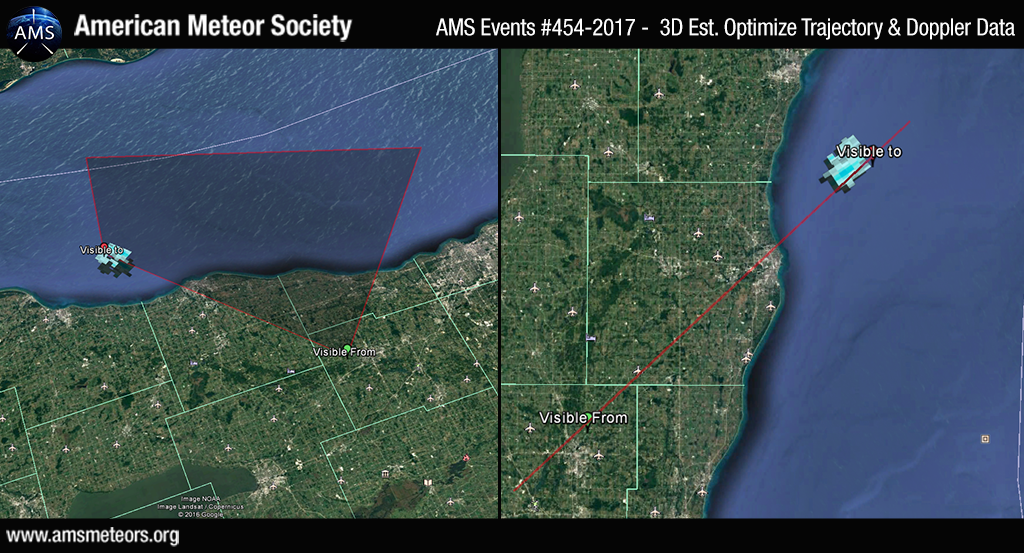
Monday, February 6th 2017, was a busy day for the American Meteor Society team. We received tens of thousands of visits on our website and even more on our Facebook page, Twitter account and Youtube account. Today, we are still receiving reports about the large green fireball that occurred over Wisconsin around 01:31 CST (07:25 UT). With more than 480 reports so far, the AMS Event#454-2017 is the 14th largest event ever treated by the AMS since 2005.
When enough reports are submitted about such an event, a trajectory of the fireball meteor can be plotted – this trajectory sometimes lead to the discovery of meteorites. This trajectory is calculated using an average of all the data shared by the witness through the online fireball reports (azimuths, elevation, etc.) The obtained trajectory can be seen on the Event page by clicking the “Show trajectory” button on the top left of the map.
While we only received 165 reports, we were able to determine a first trajectory: the fireball was traveling from the Southwest to Northeast and it ended its flight on the Lake Michigan somewhere between Sheboygan, WI and Manitowoc WI.

The trajectory can also been seen in 3D in the KML file (Google Earth) automatically created for each AMS Event. This KML file is available for free on the event page (click the “KML” button).

After we calculated the trajectory of the fireball, we asked Marc Fries (NOAA/NASA) to gather Doppler radar data of the corresponding area and look for an anomaly produced by eventual falling meteorite pieces. Marc Fries saw indeed ‘something’ in the Doppler:

The data provided by Marc Fries clearly indicates that this was a meteorite fall… and that it fell on the lake. If we compare the data obtained from the Doppler with the trajectory calculated from all the witness who filled a fireball report, the results are pretty interesting as the radar anomaly is right on the trajectory (visible flight of the meteor) and the distance between the anomaly and the end of the visible flight is only 8.85Mi (14.24km).

When we calculate the trajectory only using the reports made less than 4 hours after the event, the results are even better as the end of the trajectory overlaps the radar anomaly.

These results show one more time that the AMS Fireball program can be a tremendous help for the recovery of the meteorites. Our citizen science project benefits both the general public and the scientific community. The witnesses learn more about these phenomena while sharing their experience with us. The scientific community gather data about our solar system and sometimes even recover meteorites (scuba diving anyone?).
Below is a compilation of some of the videos the AMS received about the event:
Below is another video of the event shared on Youtube by Shane Millin from Marshall, WI
 American Meteor Society
American Meteor Society
i loved these videos
Does anyone know what angle it came in relative to the Earth’s surface? Was it Shallow or steep Relatively speaking? Is there a way to tell how much energy was released based on its brightness during its collision with the atmosphere? Finally how can we Estimate how big it was? I love this kind of stuff. Always Have and Always will. What can I do or who can I talk to to get even more involved in science like this?
Would like to know if the force of impact changed the floor of the lake. Just curious to info of circumference of the meteorite.
Carol and All,
This object was small when it entered the atmosphere and most likely only smaller fragments survived down to the water. They never made it anywhere near the floor of the lake as the water would have stopped them just below the surface. One must remember that most fireballs are only the size of baseballs and incapable of doing much damage.
Robert Lunsford
2/28/17
8:48 CT
Duration: 3-5 seconds
Going North to South
No sound
Grafton, WI
Green body, orange to blue tail
Many times brighter and larger than Venus